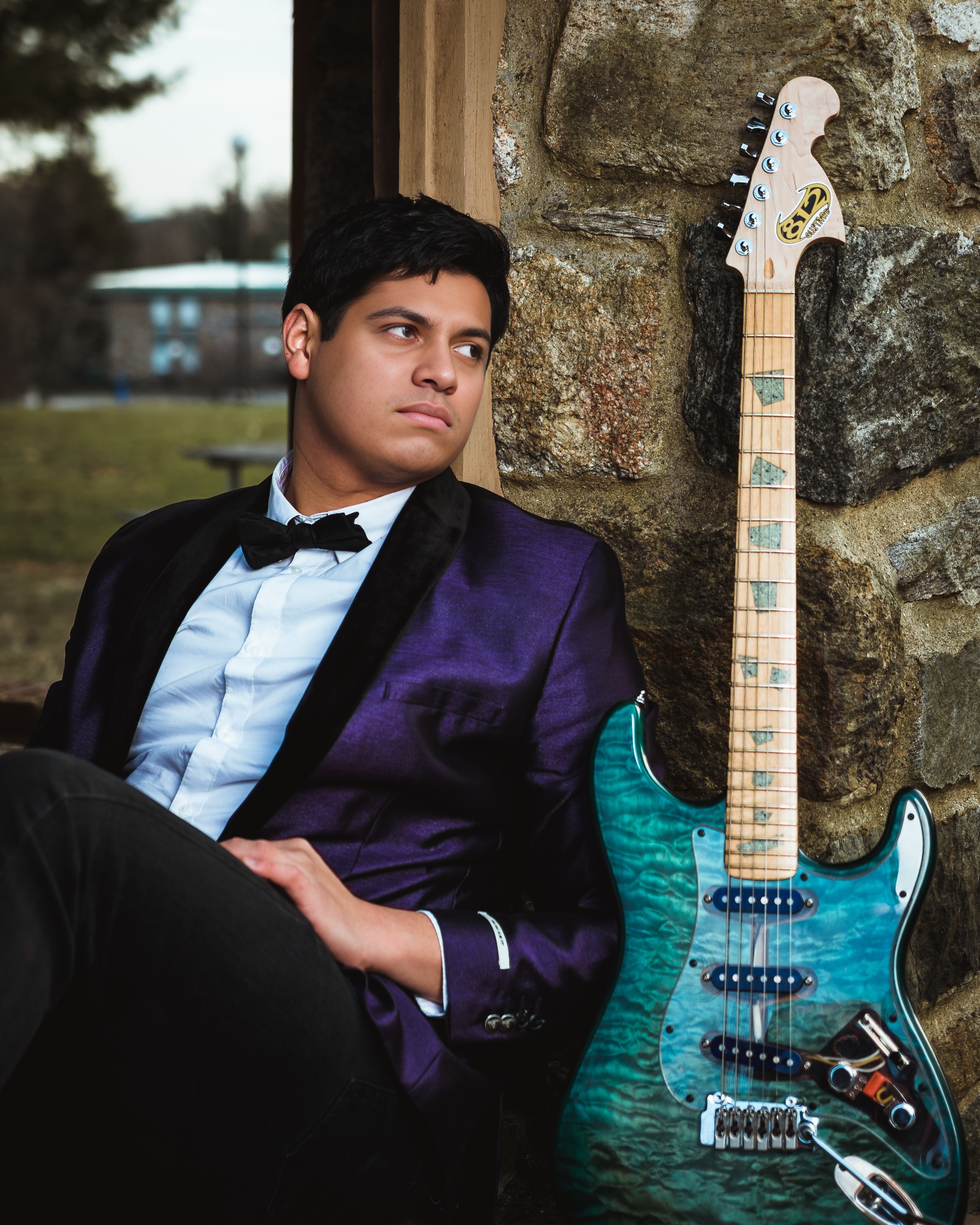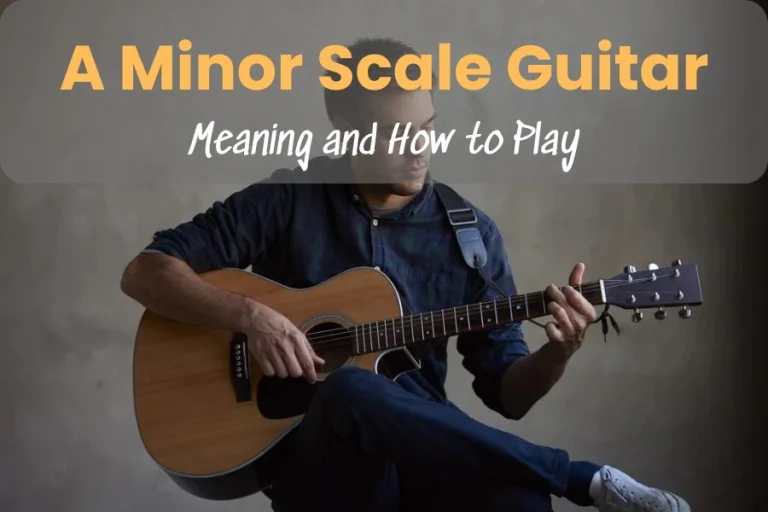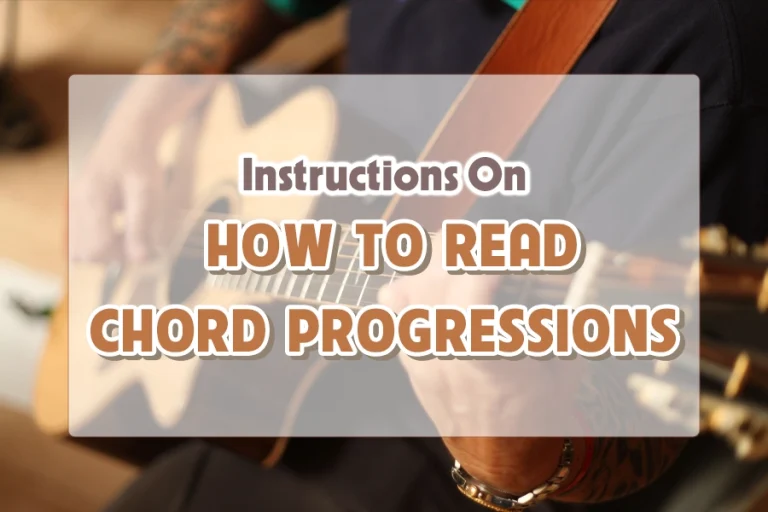Picking up an electric guitar for the first time, feeling its weight, it’s an exciting moment. But there’s one big question that pops up in every beginner’s mind: “Is It Good to Learn Acoustic Guitar Before Electric Guitar?“. When most people ask how long it will take to master a new skill, they expect that time to be measured in weeks or months.
This Eguitarmania guide will show you the most important steps and techniques you should pay attention to as you start learning how to play the electric guitar. We’ll talk about the essentials, practice, patience, and passion and what it really takes to become a master of the electric guitar. Let’s break down the process into manageable steps, get tips from the pros!
How Long Does It Take to Master an Electric Guitar ?
Mastering the electric guitar is a journey, an exploration into the phases of learning the instrument. The process can be roughly divided into three stages: the beginning, the middle, and the end. Each stage is marked by specific accomplishments.
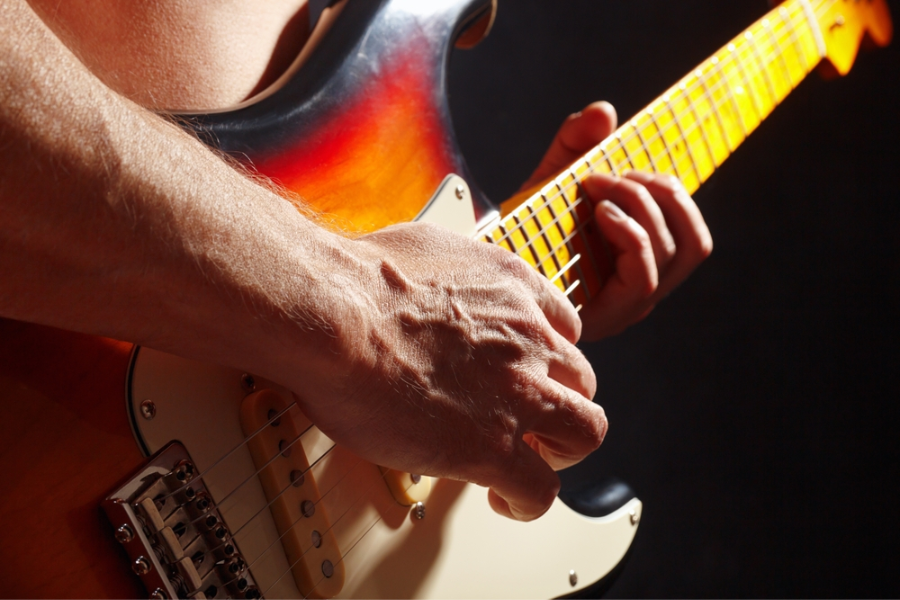
Beginner Phase
An average beginner needs between a few weeks and two months to fully understand the basic sounds. According to this schedule, you should practice every day for 20 to 30 minutes. Beginning guitarists often feel very satisfied at this stage because they can start using the chords and playing patterns they have learned.
Eguitarmania believes consistency, not length, is what matters here. Immediate wins are important for keeping you motivated, and learning a few chords can help you play easy songs. Timing and rhythm are also introduced in a real-life setting, preparing the student for more advanced methods.
Intermediate Development
Most people get better at more advanced skills, like barre chords and fingerpicking, after six to twelve months of regular practice. You need bigger, more flexible fingers and to know how the guitar’s neck works for these ways to work.
Exploring different styles of music helps a musician be more flexible and express themselves better through music. You need to practice often and with a lot of complicated timing to get better every day.
Being able to play with confidence in different styles takes time and can begin as early as the first year of learning. However, it can take years to fully master these styles. Not only do you need to know how to do it technically, but you also need to know how to make each type sound unique.
Advanced Stages
Usually, it takes years of hard work to get good at playing and writing your own music. These methods can take years to learn because you need to be accurate, quick, and know a lot about sound theory.
People usually start to learn more advanced picking methods, like sweep picking, after they’ve been playing for a while. This high level of skill shows not only physical mastery but also a deep understanding of music. At this point, patience, commitment, and the will to keep pushing yourself are very important.
How quickly someone learns to play the electric guitar depends on many factors, including how much they practice, how talented they are naturally, and how well they are taught. Keep in mind that success is not a place you get to; it’s a trip you take to keep getting better and learning new things.
Is It Good to Learn Acoustic Guitar Before Electric Guitar?
In the world of music, acoustic and electric guitars each have their own unique characteristics and learning curve. But is it good to start with the acoustic guitar before diving into the electric one?
The decision to start with an electric guitar should be based on your musical preferences and goals. The skills and techniques acquired on an acoustic guitar can often be seamlessly transferred to an electric one.
| Aspect | Advantages of Starting with Acoustic | Disadvantages of Starting with Acoustic |
| Finger Strength | Builds finger strength and dexterity | Physical effort is required to fret notes. |
| Fundamentals | A cleaner playing style, not relying on electronic effects. | Limits early exposure to electric guitar-specific techniques. |
| Cost-Effectiveness | No need for additional equipment like amplifiers and cables. | Transitioning to electric guitar may involve additional costs |
Starting my guitar journey with an acoustic guitar, I’ve found that it’s been instrumental in building my finger strength and dexterity. The thicker strings and higher action made it harder to fret notes, which was hard at first but definitely helped in the long run. Eguitarmania will tell you about the good and not-so-good points of both thin and thick strings. With the acoustic guitar’s ability to change and carry, I could practice anywhere, anytime, without needing amplifiers or cables.
Nevertheless, this road hasn’t been without its problems. The problem was that the field was limited. To switch to an electric guitar, I had to get used to its lighter strings and lower action, which meant I had to change how I played. There were times I felt like I couldn’t fully say how much I loved rock and metal with electric guitars.
Moving from an acoustic guitar to an electric guitar seemed like the next step in my musical development, even though there were some issues. I learned new things and found new ways to show myself.
How Long Does It Take To Learn Electric Guitar By Yourself?
Learning the electric guitar by yourself is a journey of self-discovery, discipline, and joy. Though it’s still not easy, it’s a lot simpler now than it was even 10 years ago, thanks to sites like YouTube that have free lessons and instructions.
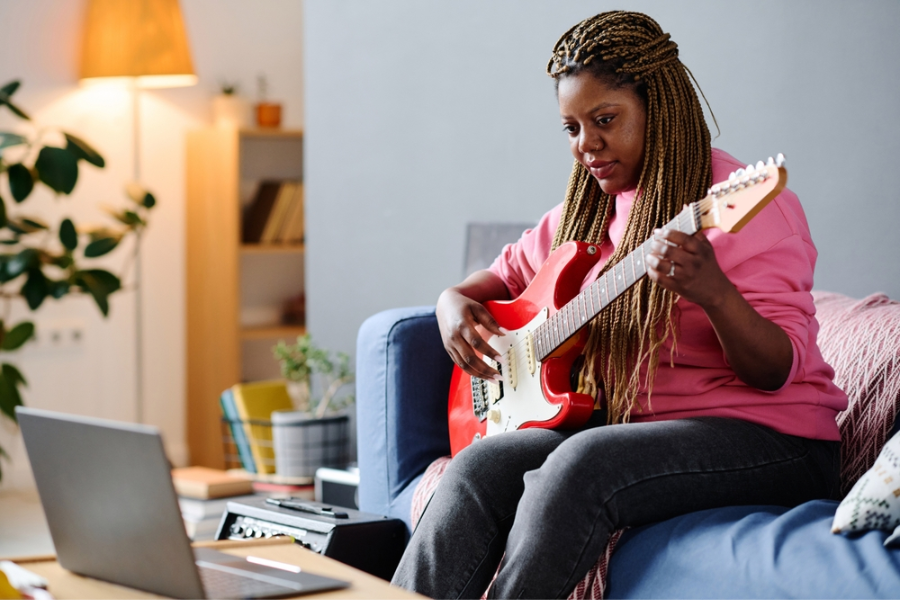
Starting from scratch, you can expect to learn basic chords and strumming patterns within the first few months of regular practice. Self-learners might reach an intermediate level within 1 to 2 years of consistent practice.
Things I Wish I Knew As A Beginner Guitarist
- Establishing routine: practice routine is crucial for players at all stages. Even 20-30 minutes of dedicated practice each day can lead to significant improvements over time.
- Socialize and community engagement: You can get support, encouragement, and useful feedback on your skills by joining online boards or local groups.
- Basics of music theory: Understand major scales, triads, and seventh chords to unlock more possibilities on the guitar.
Structured Learning vs. Self-Teaching
Lessons that are part of structured learning can be done in person or online. Teachers with a lot of experience teach these lessons, which cover a wide range of techniques, music theory, and useful skills. The best thing about planned learning is that you can get help as you go. This helps you stay away from common mistakes and methods that don’t work and can slow you down. If you use this method, you have to follow a plan, and it generally costs money.
Being self-taught, on the other hand, means learning from things like books, online lessons, and doing things for yourself. What makes self-teaching attractive is that you can change how you learn to fit your interests and speed. However, sometimes they won’t be able to find what will help them grow the most because they know too much.
How Much Time Should You Practice Each Day?
It’s important to realize, especially if your practice time is limited, that an hour of effective practice is worth two hours of wasted practice.
For beginners, it may be better to do short, focused lessons every 15 to 30 minutes than to do long routines only once in a while. If you want to study more deeply and get better at your skill, you should slowly increase the amount of time you spend practicing until you spend one to two hours a day.
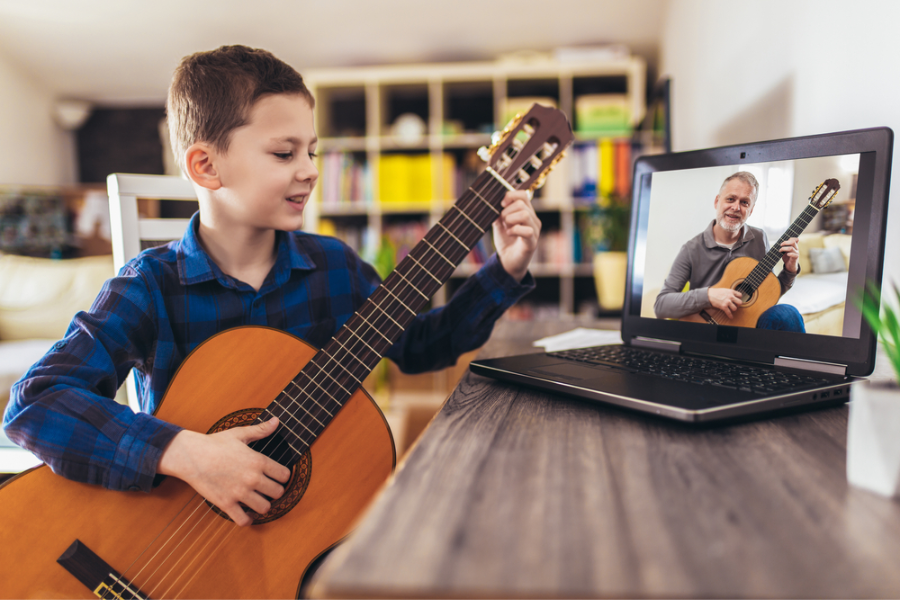
When you have free time, on holiday, between jobs or classes, or when you leave, all of these are good times to practice more. Don’t let hard riffs or solos scare you. Learn open chords like G major, C major, and D major first. These are played at the top of the guitar. These are the foundations on which many songs are built.
After that, it’s just a matter of becoming very good at muscle memory, which means remembering exactly where your fingers should go and when they should go there. Over-practicing can lead to burnout, frustration, and physical strain, particularly on the hands and arms. Listening to your body and mind, and adjusting practice times to when you feel most alert and focused, can improve the efficiency of your sessions.
Ways To Learn And Master The Guitar Faster And Quicker
Let’s discuss practical ways to learn and master the guitar more efficiently:
Use Multiple Sources of Media
Guitar Apps
In today’s digital age, the resources available to guitar learners are vast and varied.
- Online Tutorials and Lessons: Justin Guitar, Fender Play, Marty Music,…
- Podcasts and Audiobooks: Music Theory for Guitarists Podcast, Six String State of Mind Podcast , No Treble Podcast,…
- Guitar Apps: Yousician, Simply Guitar by JoyTunes,…
- Books and magazines: The Art of Picking, The Complete Idiot’s Guide to Playing Guitar, Guitar Grimoire,…
Whenever you learn anything new, write it down, repeat it, play it, or sing it. Memory works best in both auditory and visual formats. For us guitarists, it means simply writing it, repeating it, playing it, and singing it aloud—all of which help it sink in.
Use Mnemonics Where Possible
By using mnemonics, you can make learning more fun and remember things much faster. If you’re looking for ways to remember the strings on a guitar, here are a couple of mnemonic acronyms you can use.
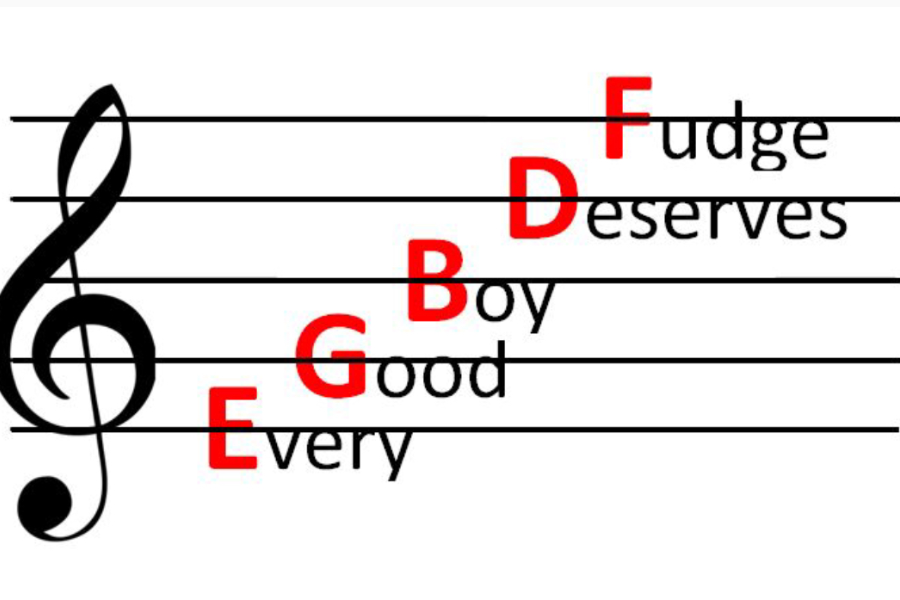
- Eat All Dead Gophers Before Easter
- Elephants And Donkeys Grow Big Ears
- Every Apple Does Good Being Eaten
- Every Amp Deserves Guitars/Basses Everyday
The mnemonic method is crazy and unusual, it doesn’t have to make sense.
Workout and train your fingers regularly
By integrating these finger workouts and training strategies into your practice routine, you can work towards mastering the guitar faster.
Practice Finger Stretching
Spend some time relaxing your fingers, hands, and arms before you start practicing and after you’re done. Stretching makes it easier to reach the fretboard and keeps you from getting pressure injuries.
Finger Independence Exercises
Playing complex guitar sections requires finger-independence exercises. Do finger-movement exercises like playing chords or strings apart. These workouts reduce finger dependence and improve your technique.
Final Thoughts
Most experts and players agree that the first part of structured learning for basic skills can last anywhere from six months to two years. Everyone has a different path to mastering the electric guitar. The time it takes depends on their personal goals, commitment, and practice habits. Some people can get good at something after practicing regularly for a few years, but for most people, true skill takes decades of practice.
Finally, getting good at playing the electric guitar is a process that has no clear end point because there is always more to learn and ways to get better. To improve, you need to be dedicated to practicing every day, asking for feedback, and always pushing yourself with new skills and creative ideas.

